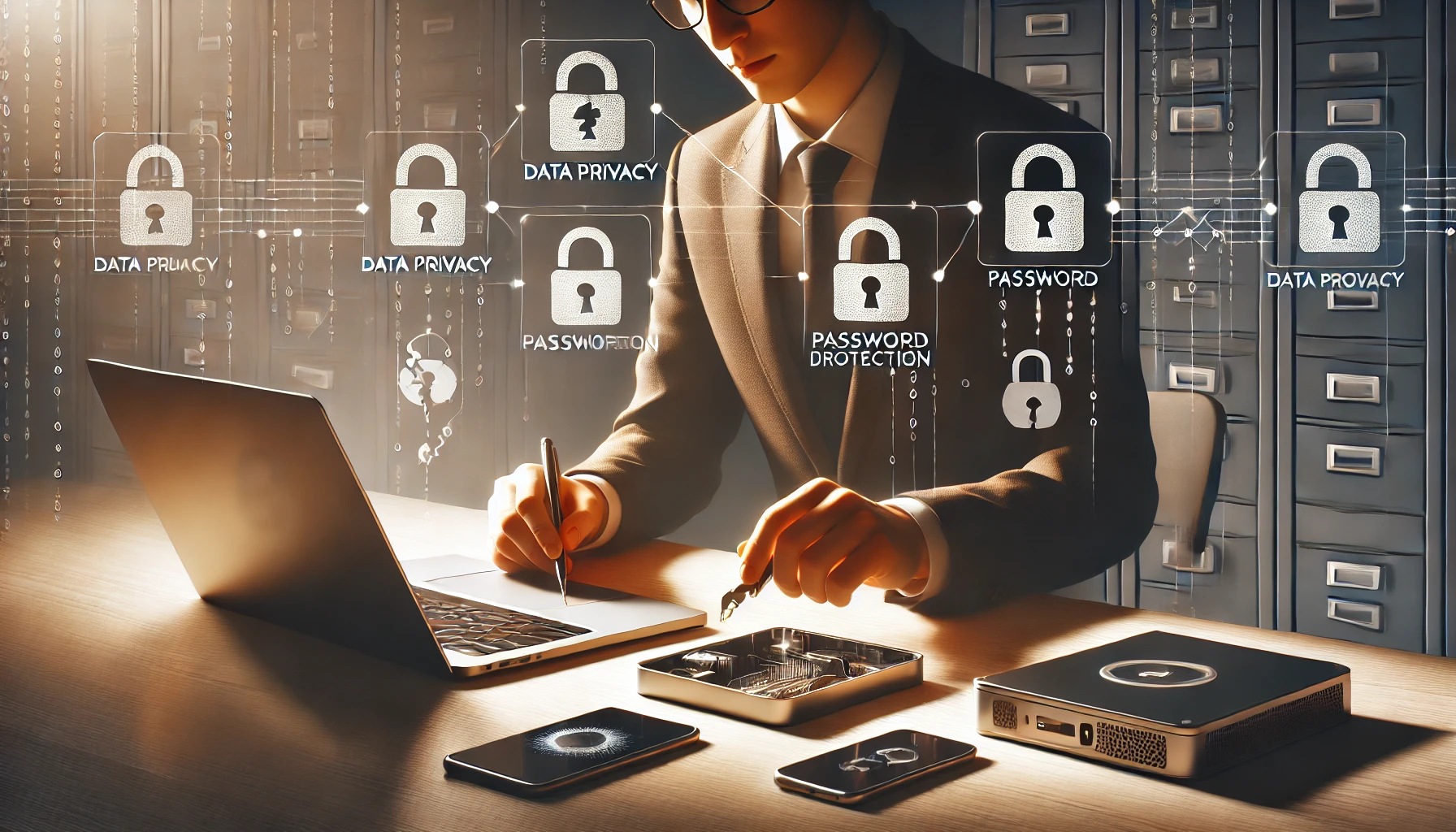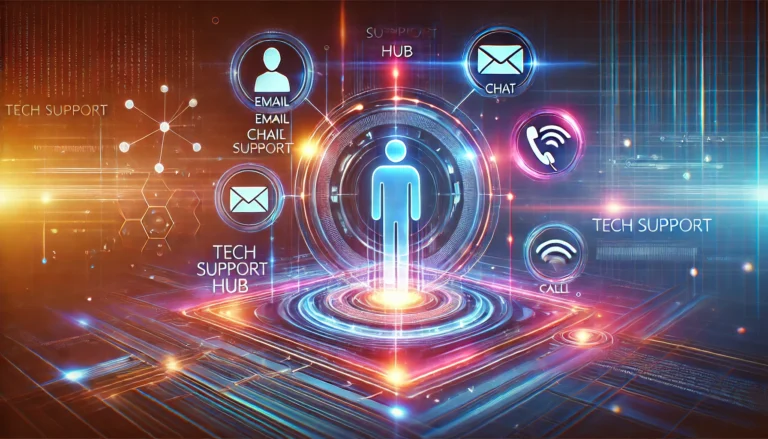Introduction
Divorce can be a difficult and emotional experience, but one often overlooked aspect is the process of disentangling your digital life. In today’s world, shared devices, accounts, and personal data are integral parts of our relationships. As a result, knowing how to clean tech stuff up post divorce becomes crucial not only for protecting your privacy but also for ensuring that you maintain control over your personal information and finances.
In this guide, we’ll walk you through the necessary steps to clean up your tech life after a divorce, ensuring that your digital world remains secure, organized, and under your control.
Why You Need to Clean Up Tech Post Divorce
When a marriage ends, it’s not just about dividing physical assets—your digital assets must also be separated. From shared social media profiles to joint financial accounts, digital spaces can become a breeding ground for confusion and privacy risks. Knowing how to clean tech stuff up post divorce is essential to avoid these issues. Divorce also comes with emotional baggage, and sometimes, digital clutter can make the process even harder. Addressing your digital life quickly and thoroughly helps reduce unnecessary stress and protects your private information.
Step 1: Assess Your Digital Landscape
The first step in how to clean tech stuff up post divorce is to assess what needs to be separated and secured. Start by taking stock of all shared accounts, devices, and subscriptions. This is a comprehensive task, but it will help you get organized and ensure you don’t miss anything important.
Create a Digital Inventory
Start by listing all the digital assets you and your ex shared. Here are the main categories to consider:
- Email Accounts: Check if you share email accounts or if your ex has access to your inbox. Change passwords or set up separate accounts as necessary.
- Streaming Services: Platforms like Netflix, Hulu, and Spotify often require joint logins. Make sure you transfer ownership or cancel subscriptions you no longer need.
- Cloud Storage: Review your shared cloud storage accounts, such as Google Drive, Dropbox, or iCloud. Transfer personal files to a new account, ensuring no sensitive information remains accessible.
- Social Media Profiles: Facebook, Instagram, and other platforms may have joint accounts or shared passwords. Update these details while ensuring that no personal or sensitive information is revealed.
- Banking and Financial Apps: If you share financial accounts or apps, such as PayPal, Venmo, or your online banking, update passwords and consider separating financial accounts if needed.
- Smart Home Devices: If you share devices like Alexa, Ring doorbells, or smart thermostats, reset passwords and update permissions.
- Subscription Services: Don’t forget about other subscriptions like magazines, gym memberships, or even food delivery services that you and your ex may have shared.
Identify Connected Devices
As you go through the inventory, it’s important to understand how to clean tech stuff up post divorce by identifying all devices connected to shared accounts or systems. This covers devices like smartphones, tablets, laptops, smartwatches, and gaming consoles. It’s essential to keep track of devices so you can update settings, disconnect any shared accounts, and delete any personal information.
Step 2: Secure Your Digital Life
Once you’ve assessed your digital landscape, it’s time to take action on how to clean tech stuff up post divorce. Securing your accounts and devices is vital to protect your privacy and prevent misuse.
Update Your Passwords
Changing your passwords should be one of the first steps you take after a divorce. Update passwords on all your major accounts, including email, banking apps, and cloud storage. Make sure you choose strong, unique passwords for each account. Avoid reusing old passwords or using simple combinations that could be easily guessed.
Password Management Tip: Consider using a password manager to store and manage your new passwords securely. Password managers help you keep track of all your accounts without the risk of forgetting login credentials.
Enable Two-Factor Authentication
Where possible, enable two-factor authentication (2FA) on all your important accounts, including email, social media, and banking apps. Two-Factor Authentication (2FA) enhances security by adding a second verification step, like a code sent to your phone, alongside your password.
Review Your Privacy Settings
Go through the privacy settings on social media platforms, email, and cloud storage accounts. Adjust settings to ensure that your personal information is not being shared with your ex or anyone else who may have had access to your accounts. Make sure you are the only one who can access your private data.
Step 3: Manage Shared Devices
Shared devices can pose a significant risk if not properly managed after a divorce. Knowing how to clean tech stuff up post divorce is crucial in this situation. If you and your ex used the same devices, you must ensure that your personal information is wiped clean and no unauthorized access remains.
Reset Devices to Factory Settings
For smartphones, tablets, and laptops, reset the devices to their factory settings. This ensures that all personal information, apps, and data are completely erased. It’s important to do this for any devices that were shared or that your ex had access to, such as a family computer or tablet.
Remove Your Accounts from Shared Devices
If you’re not ready to reset the device entirely, at least remove all your accounts. Log out of all shared accounts and delete your personal information from the device. Pay special attention to cloud storage, email apps, and social media profiles that may still be linked to the device.
Step 4: Handle Financial Apps and Services
In many cases, financial apps and shared subscriptions can become a point of contention during divorce proceedings. Understanding how to clean tech stuff up post divorce is essential to protect your finances. To ensure your financial security, follow these steps:
Close or Separate Joint Accounts
If you share financial apps like Venmo, PayPal, or joint bank accounts, work with your bank or financial institution to close or separate these accounts. Make sure that your ex no longer has access to your financial transactions.
Transfer Ownership of Shared Subscriptions
For shared services like Netflix, Spotify, or cloud storage, make sure that the account owner is updated. Cancel any subscriptions you no longer need, and transfer ownership of those that you want to continue using.
Step 5: Legal Considerations for Digital Assets
In some cases, digital assets may need to be addressed in divorce agreements, especially if you and your ex shared a business or important financial information. Knowing how to clean tech stuff up post divorce is vital in these situations. Here are some legal considerations to keep in mind:
- Ownership of Digital Assets: Ensure that your digital assets, including photos, files, and documents stored online, are properly assigned. Some jurisdictions recognize digital assets as part of the division of assets.
- Legal Help: If you are unsure about how to handle digital assets during divorce, consult with a lawyer to ensure that your privacy and financial interests are protected.
Step 6: Long-Term Tech Maintenance
Once the initial clean-up is done, it’s essential to establish long-term strategies for maintaining your digital security and privacy. Knowing how to clean tech stuff up post divorce is just the beginning. Here are a few steps to keep your tech life in order:
- Regularly Update Passwords: Periodically change your passwords and review your privacy settings to keep your accounts secure.
- Monitor Financial Transactions: Keep an eye on your financial apps and accounts for any unusual activity, especially in the first few months after the divorce.
- Use Encryption: For sensitive data, consider using encryption software to protect your files.
FAQs about Cleaning Tech Stuff Up Post Divorce
Q1: Do I need to change my passwords on all my accounts?
Yes! After a divorce, it’s essential to change passwords on all accounts, especially those involving sensitive information like banking, email, and social media. This is an important part of how to clean tech stuff up post divorce to prevent unauthorized access.
Q2: What should I do with shared devices like smartphones or computers?
Reset shared devices to factory settings to erase all personal information. If you’re not resetting them, at least remove your accounts and personal data from the device. This step is a key part of how to clean tech stuff up post divorce.
Q3: How do I handle financial apps that we shared?
Separate or close any joint financial accounts. Transfer ownership of shared subscriptions and cancel those you no longer need. This ensures that your financial data is secure when you are figuring out how to clean tech stuff up post divorce.
Q4: Can I lose my digital assets in a divorce?
Digital assets like photos, documents, and digital media may be part of the divorce settlement. Make sure they are clearly addressed in your divorce agreement as part of how to clean tech stuff up post divorce.
Conclusion
Cleaning up your tech post-divorce isn’t just about securing your privacy—it’s also about regaining control of your digital life. Knowing how to clean tech stuff up post divorce is essential for ensuring your accounts, devices, and data are separated properly, and that you are protected from potential risks. The key is staying organized, acting quickly, and staying proactive about your digital security.







